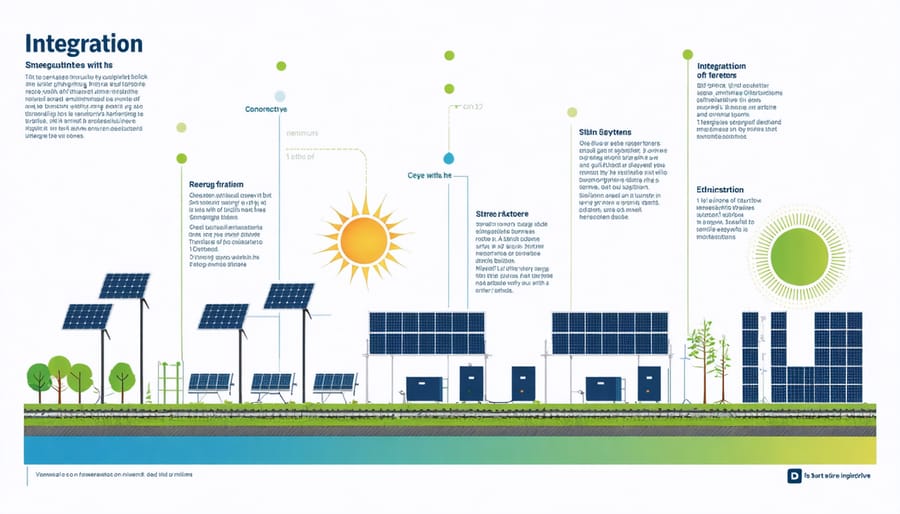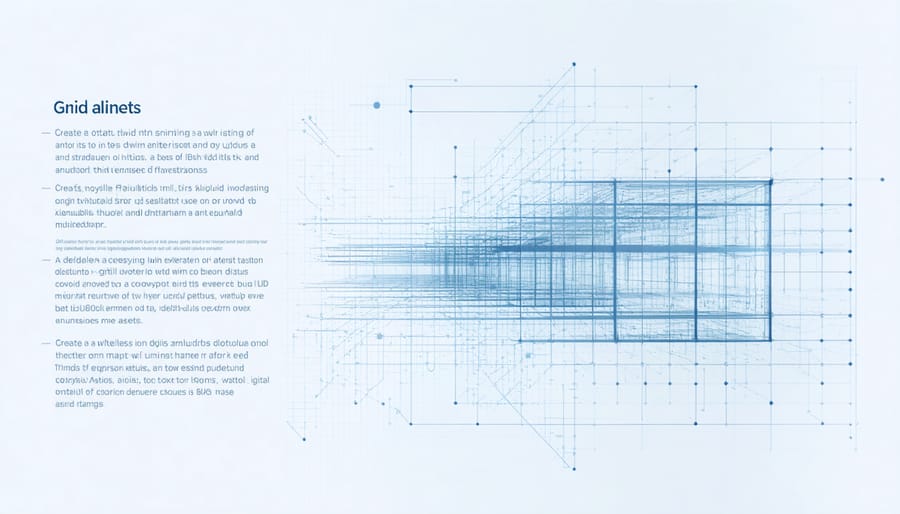In today’s complex energy landscape, grid management software stands as the cornerstone of modern power distribution systems, enabling unprecedented control over electricity networks and sustainable resource allocation. This sophisticated technology transforms how utilities and facility managers monitor, analyze, and optimize their power infrastructure, delivering real-time insights and automated responses to dynamic grid conditions.
As organizations worldwide transition toward smart grid technologies, advanced grid management solutions have become essential tools for maintaining reliability, reducing operational costs, and integrating renewable energy sources. These platforms combine artificial intelligence, data analytics, and IoT capabilities to create a responsive, resilient electrical infrastructure that adapts to changing demand patterns and environmental conditions.
The impact of grid management software extends beyond basic utility operations, revolutionizing how businesses and communities approach energy consumption and distribution. From predictive maintenance to demand response programs, these systems provide the intelligence needed to balance grid stability with environmental responsibility, while ensuring consistent power delivery to end-users.
For decision-makers navigating the evolving energy sector, understanding the capabilities and benefits of grid management software has become crucial for maintaining competitive advantage and meeting increasingly stringent regulatory requirements.

Real-Time Grid Monitoring and Control
Advanced Analytics and Forecasting
Modern grid management software leverages advanced analytics and machine learning algorithms to transform raw data into actionable insights. These sophisticated systems analyze historical consumption patterns, weather data, and real-time grid conditions to generate accurate demand forecasts and identify potential issues before they occur.
The predictive capabilities enable facility managers to anticipate peak demand periods and optimize energy distribution accordingly. By processing multiple data streams simultaneously, the software can identify trends, anomalies, and opportunities for efficiency improvements. Users can access detailed performance metrics through customizable dashboards that present complex data in easily digestible visualizations.
Key analytical features include load forecasting, which predicts energy demand up to several days in advance, and asset performance analysis that monitors equipment health and predicts maintenance needs. The software also performs scenario modeling to help organizations prepare for various contingencies and optimize their energy strategies.
Advanced reporting tools generate comprehensive insights on energy usage patterns, cost analysis, and carbon emissions. These reports support data-driven decision-making and help organizations demonstrate compliance with regulatory requirements. Real-time analytics also enable dynamic pricing strategies and demand response program participation, maximizing cost savings while maintaining grid stability.
Load Balancing and Demand Response
Modern grid management software excels in optimizing power distribution through sophisticated load balancing and demand response mechanisms. These systems continuously monitor energy consumption patterns and automatically adjust distribution based on real-time demand fluctuations. By integrating with battery storage solutions and smart meters, the software can effectively manage peak loads and reduce strain on the grid.
Demand response features enable automatic load shedding during high-demand periods, incentivizing consumers to reduce consumption when grid capacity is stretched. The software implements pre-programmed responses to various scenarios, such as shifting non-essential operations to off-peak hours or activating stored energy reserves.
Advanced algorithms predict demand patterns using historical data, weather forecasts, and local events, allowing proactive load management rather than reactive responses. This predictive capability helps facility managers optimize energy costs while maintaining operational efficiency.
For example, a manufacturing facility using grid management software reduced peak demand charges by 23% through automated load shifting and strategic demand response participation. The system’s ability to balance multiple power sources, including renewable inputs, ensures consistent power quality while maximizing cost savings.

Integration with Renewable Energy Sources
Solar Energy Integration
Modern grid management software has revolutionized the integration of solar energy systems, offering sophisticated features that maximize renewable energy utilization while maintaining grid stability. These platforms provide real-time monitoring and predictive analytics for solar power generation, enabling facility managers to optimize their alternative energy solutions and storage capabilities.
Key functionalities include automated solar production forecasting based on weather data, dynamic load balancing between solar and conventional power sources, and intelligent storage management. The software’s algorithms analyze historical generation patterns, weather forecasts, and consumption data to optimize energy distribution and storage decisions.
For example, when solar production peaks during midday, the system automatically redirects excess power to storage systems or adjusts facility operations to maximize self-consumption. During periods of low solar generation, the software seamlessly manages the transition to stored energy or grid power, ensuring uninterrupted operations.
Advanced monitoring features provide detailed insights into solar panel performance, helping maintenance teams identify and address efficiency issues promptly. The software also facilitates compliance with grid regulations and renewable energy credits by generating comprehensive reports and maintaining accurate production records.
Many systems now incorporate machine learning capabilities that continuously improve prediction accuracy and system efficiency, leading to enhanced ROI for solar investments.
Energy Storage Management
Modern grid management software incorporates sophisticated energy storage management capabilities that optimize the performance and efficiency of battery systems and other advanced energy storage technologies. These systems utilize predictive analytics and machine learning algorithms to determine optimal charging and discharging cycles, maximizing storage capacity while extending battery life.
The software enables real-time monitoring of storage system health, state of charge, and performance metrics, allowing facility managers to make data-driven decisions about energy distribution. Through automated demand response protocols, the system can intelligently shift between storage and grid power based on peak pricing periods, resulting in significant cost savings for organizations.
Key features include capacity forecasting, which helps predict storage needs based on historical usage patterns and weather data, and automated maintenance scheduling to ensure optimal system performance. The software also provides detailed analytics on storage efficiency, degradation rates, and financial returns, enabling organizations to maximize their investment in energy storage infrastructure.
Integration with other grid management components allows for seamless coordination between renewable energy sources, storage systems, and facility power demands. This orchestration ensures reliable power supply while maintaining grid stability and minimizing dependency on external power sources during peak demand periods.
Cost Optimization and ROI
Energy Cost Reduction
Grid management software significantly reduces operational costs through intelligent energy distribution and consumption optimization. By leveraging advanced algorithms and real-time data analytics, these systems automatically identify and implement cost-saving opportunities across the entire power infrastructure. Studies show that facilities implementing comprehensive grid management solutions typically achieve 15-30% reduction in energy expenses within the first year.
The software’s demand response capabilities enable organizations to participate in utility incentive programs, generating additional revenue streams while contributing to grid stability. Through automated load shifting and peak demand management, businesses can avoid costly demand charges and take advantage of time-of-use pricing structures. Like other commercial power innovations, these systems optimize energy storage utilization, ensuring maximum return on investment from battery systems and other storage solutions.
Real-world implementations demonstrate substantial savings. For example, a manufacturing facility in Melbourne reduced its annual energy costs by $275,000 after implementing grid management software, while a commercial office complex achieved a 22% decrease in operational expenses through automated energy optimization and strategic load management.
Maintenance and Asset Management
Modern grid management software incorporates sophisticated predictive maintenance capabilities that revolutionize how utilities maintain their infrastructure. These systems analyze real-time data from sensors and equipment to forecast potential failures before they occur, reducing downtime and extending asset lifespans.
The software tracks key performance indicators across the grid infrastructure, monitoring equipment health through parameters such as temperature, vibration, and load patterns. By establishing baseline performance metrics, the system can detect anomalies and alert maintenance teams to address issues proactively.
Asset lifecycle management features enable organizations to optimize their maintenance schedules and budget allocation. The software maintains detailed records of equipment history, maintenance costs, and performance trends, helping managers make data-driven decisions about repairs versus replacements.
Implementation of these maintenance features typically results in:
– 15-30% reduction in maintenance costs
– 20-40% decrease in unexpected equipment failures
– Extended asset lifespan by up to 25%
– Improved workforce efficiency through optimized scheduling
Organizations can prioritize maintenance activities based on critical factors such as asset condition, replacement costs, and system impact, ensuring maximum return on infrastructure investments while maintaining grid reliability.

Implementation and Integration
System Requirements
Modern grid management software requires robust infrastructure to operate effectively and securely. At minimum, organizations need enterprise-grade servers with multi-core processors and at least 16GB RAM to handle real-time data processing. Storage requirements typically start at 1TB and scale based on historical data retention needs.
The software demands a reliable network infrastructure with minimum 100Mbps bandwidth and redundant connections to ensure uninterrupted monitoring. Organizations should maintain a 99.9% uptime guarantee for critical grid operations. Compatible operating systems include Windows Server 2016 or newer, and enterprise Linux distributions.
Database requirements often include SQL Server or Oracle for enterprise deployments, with NoSQL solutions for big data analytics. Cybersecurity infrastructure is essential, including firewalls, encryption protocols, and secure authentication systems that comply with IEC 61850 and other relevant grid security standards.
For optimal performance, organizations should deploy dedicated workstations for control room operations, featuring dual monitors and specialized input devices. Mobile access requires secure VPN connections and devices running iOS 12+ or Android 8.0+. Cloud-based deployments need scalable cloud infrastructure with automatic failover capabilities and geographically distributed backup systems to ensure continuous operation during emergencies.
Integration with Existing Systems
Grid management software is designed to seamlessly integrate with existing power infrastructure through standardized protocols and flexible APIs. Modern solutions support integration with SCADA systems, energy management systems (EMS), distribution management systems (DMS), and legacy grid equipment through industry-standard protocols like IEC 61850, DNP3, and Modbus.
The integration process typically begins with a comprehensive assessment of current systems, followed by a phased implementation approach that minimizes disruption to ongoing operations. Advanced middleware solutions enable real-time data exchange between new and existing components, ensuring continuous monitoring and control capabilities.
For example, at the Pacific Northwest Smart Grid Demonstration Project, grid management software was successfully integrated with multiple utility systems across five states, connecting legacy equipment with modern smart grid components. The software’s adaptable architecture allowed for custom interfaces with various meter data management systems, outage management systems, and customer information systems.
Most contemporary grid management platforms offer pre-built connectors for common utility systems and customizable integration frameworks that can be tailored to specific operational requirements. This flexibility ensures organizations can maintain their existing investments while gradually upgrading their grid infrastructure to support more advanced capabilities.
Grid management software has emerged as a cornerstone of modern energy systems, playing a pivotal role in the transition toward smarter, more efficient, and sustainable power infrastructure. As energy grids become increasingly complex with the integration of renewable sources, distributed energy resources, and dynamic load patterns, these sophisticated software solutions have become indispensable for maintaining grid stability and optimizing performance.
The implementation of grid management software delivers tangible benefits across multiple dimensions. Organizations consistently report improved operational efficiency, reduced energy costs, and enhanced grid reliability. The ability to predict and prevent potential system failures, optimize power distribution, and respond quickly to changing demand patterns has proven invaluable for utilities and facility managers alike.
Looking ahead, the importance of grid management software will only continue to grow. As we face increasing pressure to reduce carbon emissions and manage energy resources more effectively, these systems will be crucial in enabling the smart grids of tomorrow. Their role in facilitating the integration of renewable energy sources, supporting demand response programs, and enabling real-time decision-making will be fundamental to achieving our sustainable energy goals.
For organizations considering grid modernization initiatives, investing in robust grid management software is no longer optional but essential for remaining competitive and environmentally responsible in an evolving energy landscape. The return on investment, both in terms of operational efficiency and sustainability metrics, makes it a strategic imperative for forward-thinking organizations.

